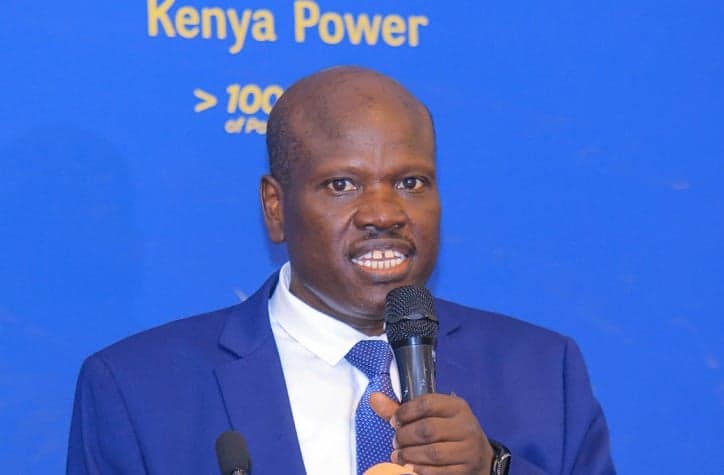Loading News Article...
We're loading the full news article for you. This includes the article content, images, author information, and related articles.
We're loading the full news article for you. This includes the article content, images, author information, and related articles.
Kenyans are paying higher electricity tariffs partly due to the incomplete status of several critical power infrastructure projects, leading to increased power loss and distribution costs.

Nairobi, Kenya – Unfinished mega power projects across the country are contributing significantly to the high electricity bills burdening Kenyan consumers, according to Kenya Power Managing Director Dr. Joseph Siror. Speaking at a parliamentary meeting on Wednesday, October 15, 2025, Dr. Siror highlighted that the costs associated with power loss from these uncompleted projects are ultimately passed on to consumers.
Dr. Siror, who was appointed MD and CEO of Kenya Power on Tuesday, May 2, 2023, explained to the National Assembly Public Investment Committee on Commercial Affairs and Energy that consumers are currently shouldering 17.5 percent of the power loss directly attributable to the government's failure to complete various infrastructure developments.
Kenya's electricity prices are among the highest in the East African and Central regions. A report by the Parliamentary Budget Office in April 2025 indicated that Kenyan households pay an average of KSh 33.60 per unit, significantly more than households in Ethiopia (KSh 0.77), Tanzania (KSh 11.63), and Uganda (KSh 21.97).
The Energy and Petroleum Regulatory Authority (EPRA) is mandated to regulate electricity tariffs, with reviews typically conducted every three years. However, the World Bank has previously pointed to weaknesses in governance, particularly concerning Power Purchasing Agreements (PPAs), as a contributing factor to Kenya's elevated electricity tariffs.
The Energy Act of 2019 designates EPRA as the body responsible for setting electricity prices. EPRA adjusts electricity prices monthly to account for fluctuating costs such as fuel and foreign exchange, and sets new base tariffs periodically. The current schedule of tariffs became effective in July 2025.
Kenya Power acts as the primary distributor and retailer of electricity, procuring bulk power from generating companies, including KenGen and Independent Power Producers (IPPs), through PPAs approved by EPRA. The utility then transmits and distributes this energy to over 9.6 million customers.
Dr. Siror emphasized that the completion of five major ongoing power projects would provide significant relief to consumers. These projects include the 220KV Mariakani substation, Rumuruti-Nanyuki-Isiolo Transmission Lines, Lessos substation, Narok-Bomet transmission line, and the Sondu-Homa Bay-Awendo power line. While the Sondu-Homa Bay-Awendo line is complete, its energization is pending due to encroachment on the power line's wayleave, requiring the relocation of affected residents.
Kenya Power has also warned that demands from counties to impose wayleave charges for its distribution lines could further escalate electricity prices by up to 30 percent, a cost that would inevitably be passed on to consumers.
Electricity losses by Kenya Power have been a persistent challenge. In December 2024, system losses rose to 23.65 percent from 23.16 percent in June 2024, marking the highest level in at least a year. This figure exceeds the allowable loss rate of 18.5 percent set by EPRA, meaning Kenya Power cannot recover the excess losses from consumers. System losses comprise both technical losses (due to aging infrastructure and inefficiencies in transmission and distribution) and commercial losses (resulting from illegal connections and meter tampering).
Kenya's energy mix is predominantly green, with geothermal, hydro, and wind sources accounting for over 90% of electricity generation between July 2024 and June 2025. Geothermal energy alone contributes nearly half of the clean power. Despite this, the country's extensive infrastructure and high capacity charges paid to IPPs under 'take-or-pay' contracts contribute to the high cost of power.
The continued delay in completing power projects and the high system losses directly translate to inflated electricity bills for Kenyans. This impacts household budgets and increases operational costs for businesses, potentially hindering economic growth. The inability to fully energize completed lines due to wayleave issues further exacerbates power supply challenges in affected regions.
The exact timelines for resolving the wayleave issues affecting the Sondu-Homa Bay-Awendo power line and the completion of the other four critical projects remain unclear. The financial implications of these delays, both for Kenya Power and the consumer, warrant further scrutiny.
Dr. Siror's appearance before the parliamentary committee on Wednesday, October 15, 2025, underscores ongoing efforts to address the high cost of electricity. Kenya Power has previously announced a 13.7 percent reduction in electricity prices for domestic customers in April 2024, attributed to a stronger shilling and lower fuel costs. However, a recent EPRA review in October 2025 saw an increase of KSh 5.24 per unit due to higher fuel costs, foreign exchange adjustments, and statutory levies.
Consumers should monitor updates from Kenya Power and EPRA regarding the progress of the unfinished power projects and any future tariff adjustments. The ongoing parliamentary inquiry into electricity costs may also yield policy recommendations aimed at alleviating the burden on consumers. The stability of the Kenyan Shilling and global fuel prices will continue to influence variable charges on electricity bills.
Keep the conversation in one place—threads here stay linked to the story and in the forums.
Other hot threads
E-sports and Gaming Community in Kenya
Active 6 months ago
Popular Recreational Activities Across Counties
Active 6 months ago
The Role of Technology in Modern Agriculture (AgriTech)
Active 6 months ago
Investing in Youth Sports Development Programs
Active 6 months ago